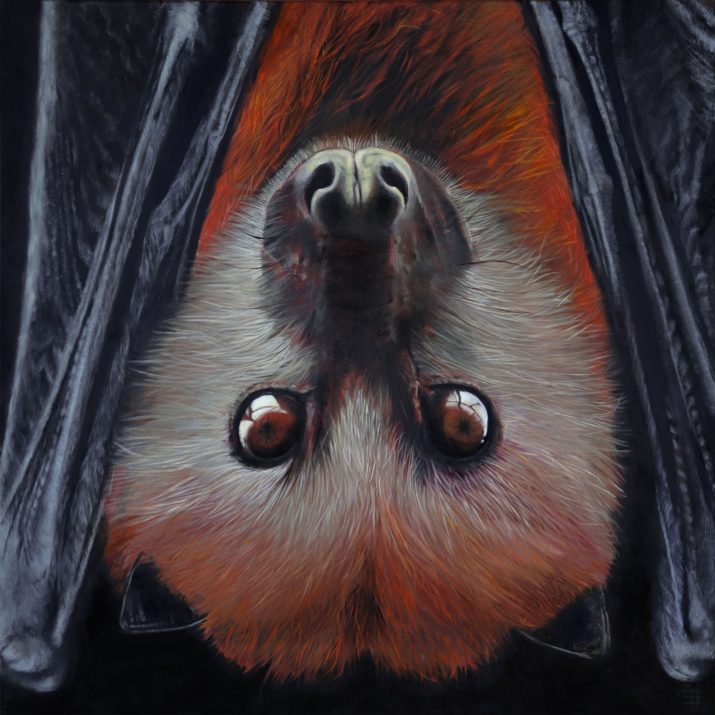- The Mauritius fruit bat is also known as the Greater Mascarene flying fox.
- Once there were three fruit bat species, one is now extinct, leaving one species each on the islands of Mauritius (Pteropus niger) and Rodrigues (P. rodricensis).
- Once widespread over Mauritius, the Mauritius Fruit Bat population has decreased considerably due to habitat loss, cyclones and illegal sport hunting.
- Although this bat became extinct on Reunion, where it was last recorded in 1790, the island has been recolonized by a handful of individuals over the last decade.
- Largely due to a lack of major cyclones over the last decade, the population increased shifting its IUCN Red List status from Endangered to Vulnerable in 2014.
- However in November 2015, the Mauritian government introduced a new act, legalising the cull of these creatures on the basis that they were a major threat to exotic plant species. This caused an outrage among local wildlife conservation organisations.
- Since 2015, the government has officially killed more than 51,318 flying foxes but scientists believe the number is probably much higher.
- The general public consider the Mauritius fruit bat as a major pest to exotic fruit crops, mainly litchis and mangos, although the real extent of their damage to these fruit crops has only recently been studied.
- The Mauritian government reported 42% to 73% damage to litchis and mangos attributed to bats, but ignored the fact that damage to fruits are also caused by introduced birds, winds and diseases.
- The Mauritian Wildlife Foundation now runs a Bat Education project on Mauritius, funded by The Rufford Foundation (UK). This project aims to promote:
- Awareness amongst Mauritian people of the levels of damage the bats actually cause to fruit production.
- The value of bats to the ecosystem.
- The advantages of pruning trees and netting.
- Opposition to culling and a positive image of bats.
Created during the teaching of an Artspace Mauritius workshop in June 2018 Oil on canvas 100cm x 100cm x 4cm















